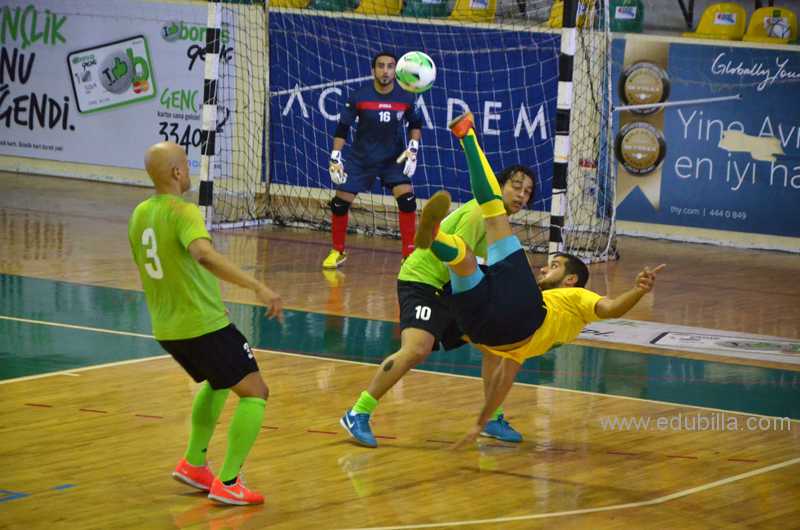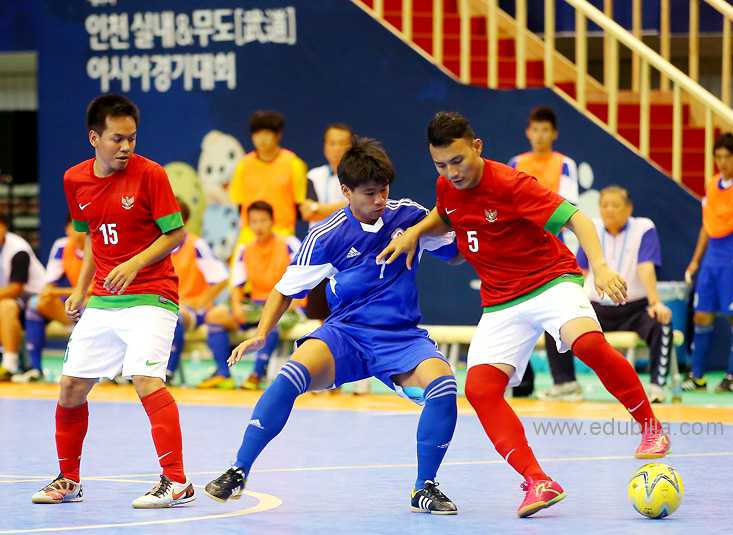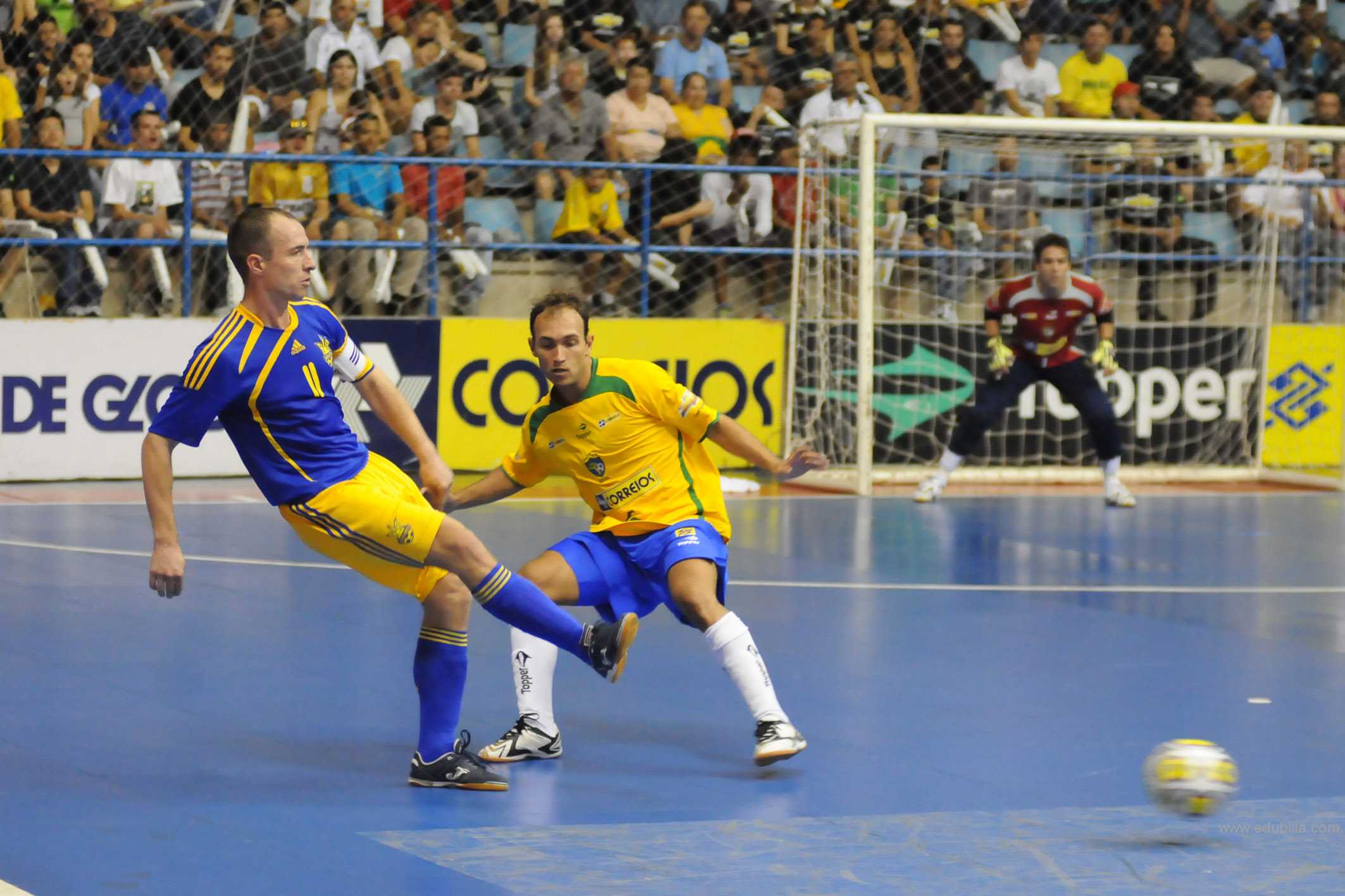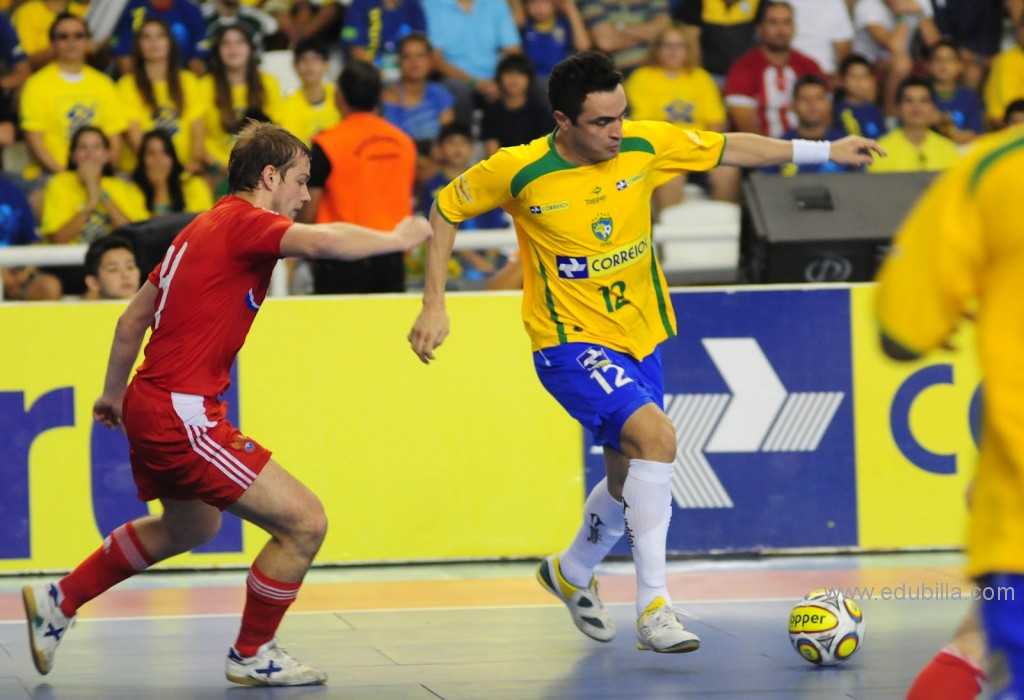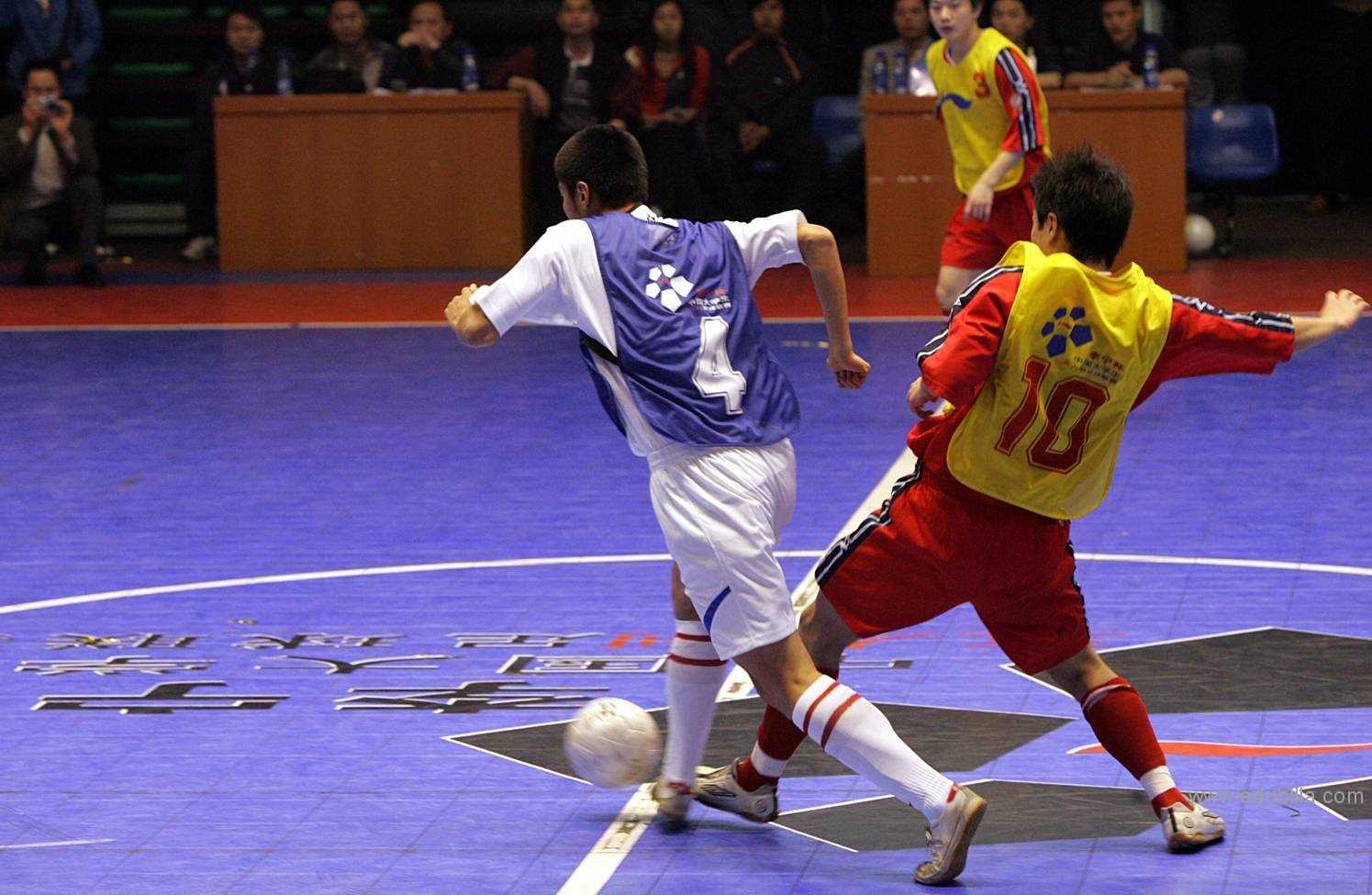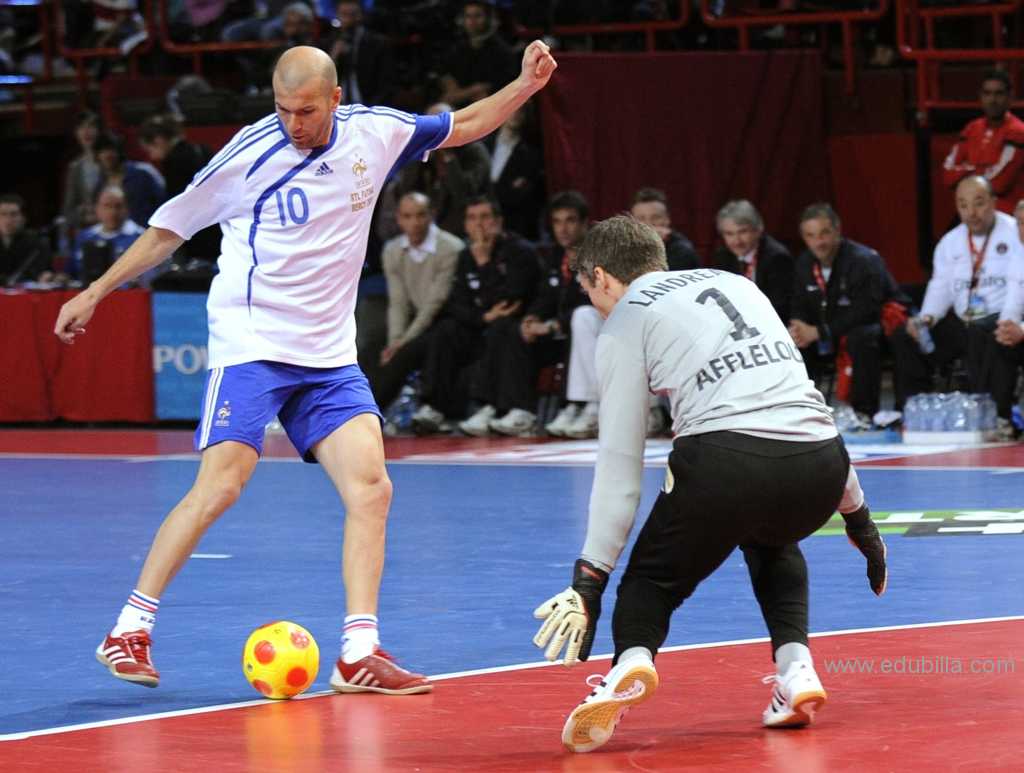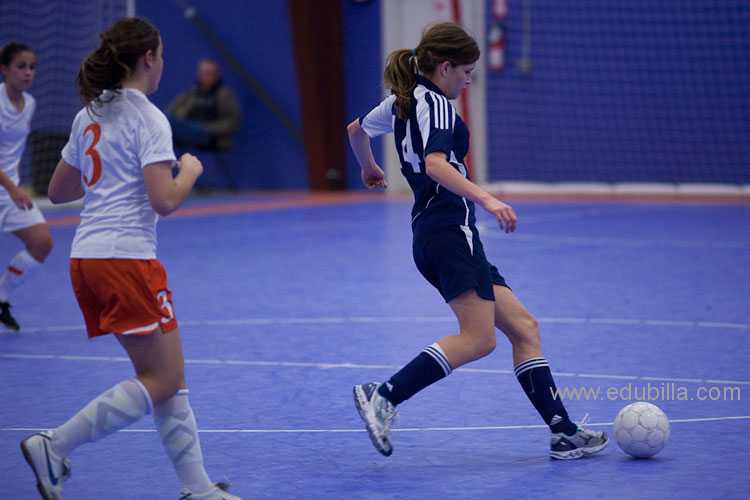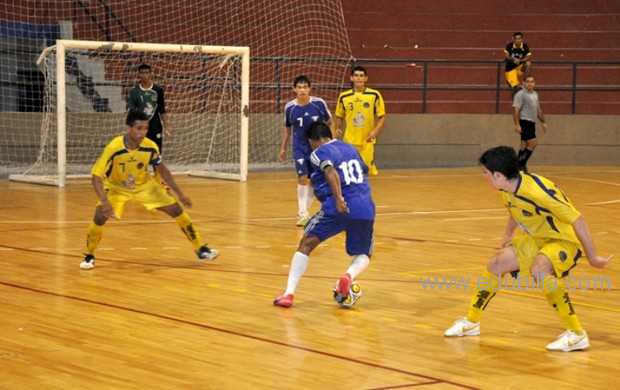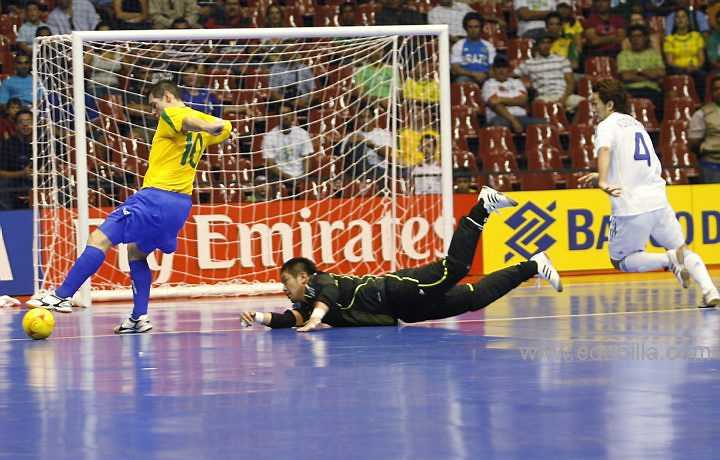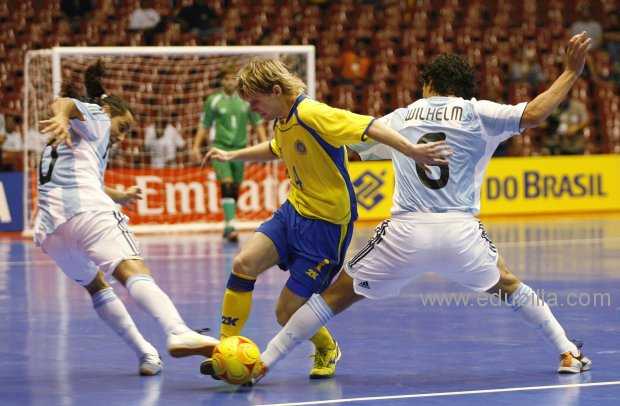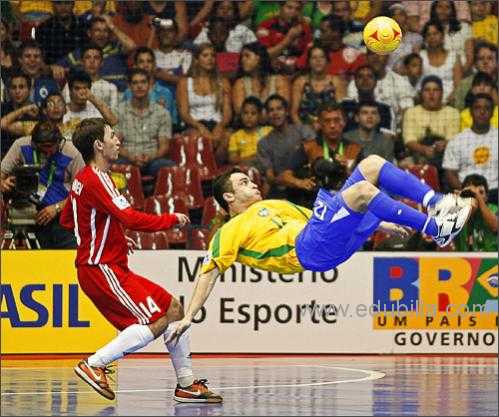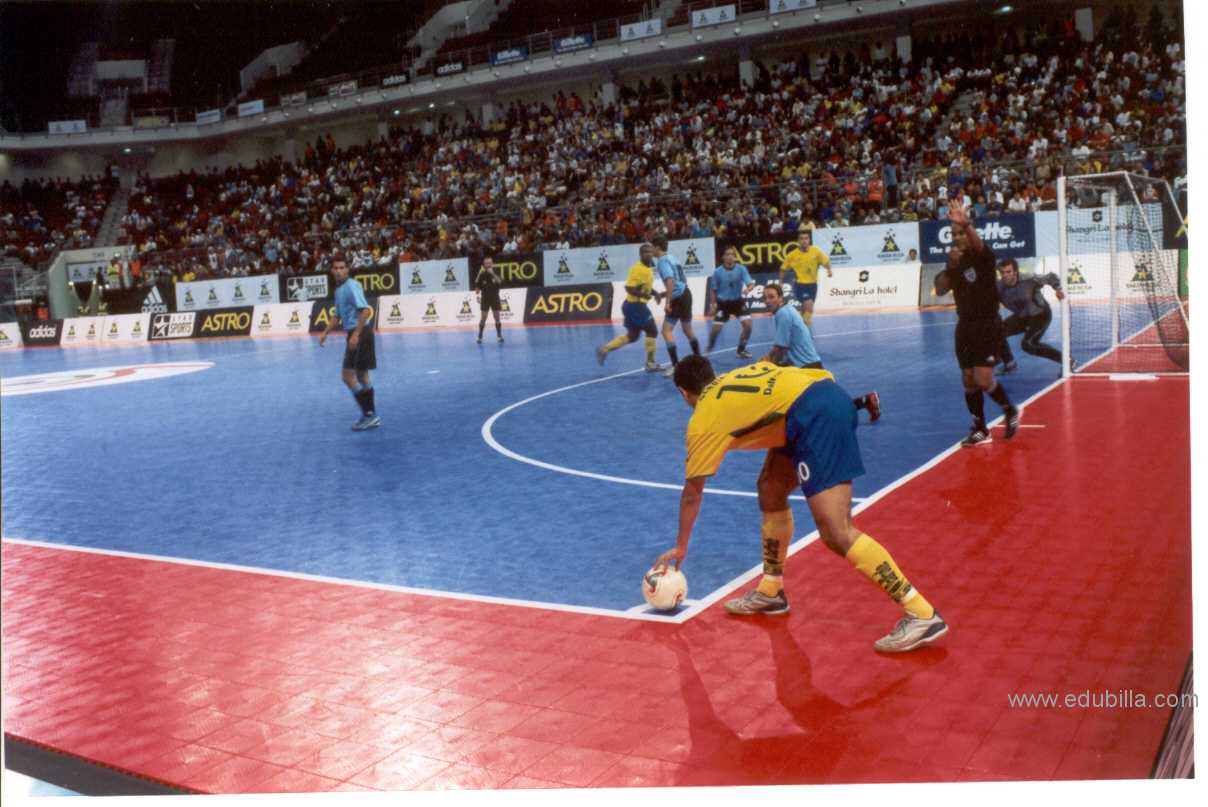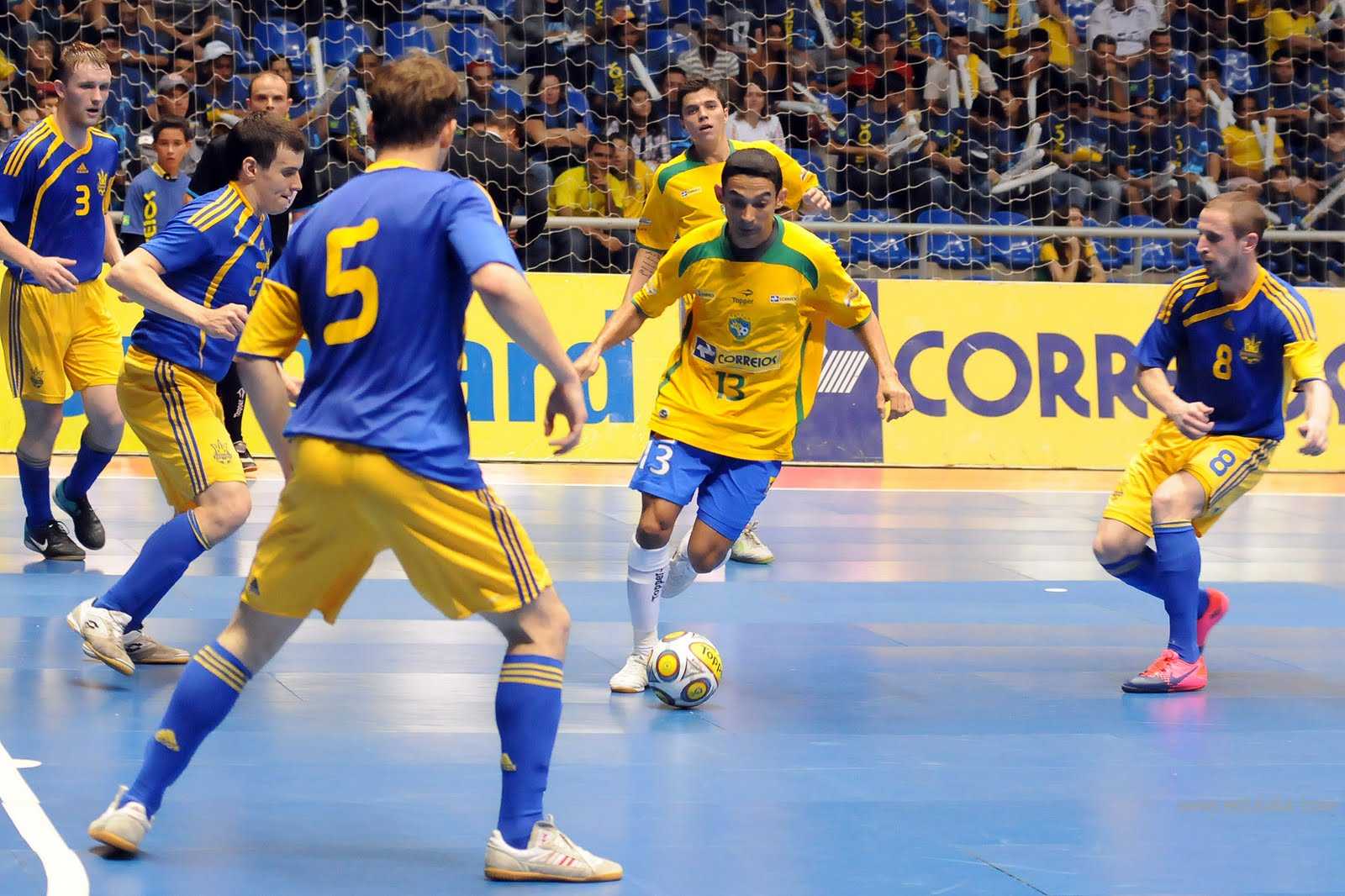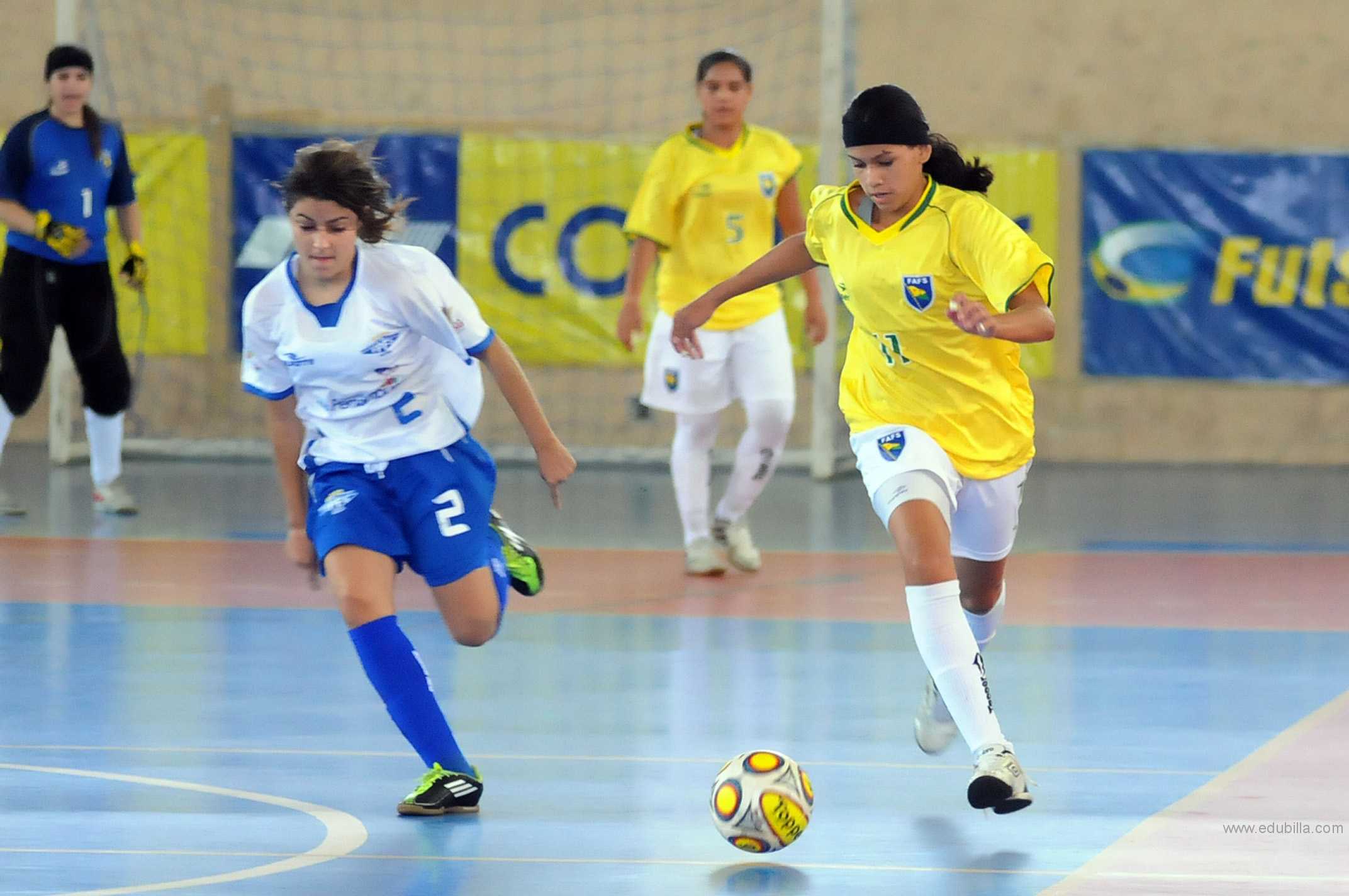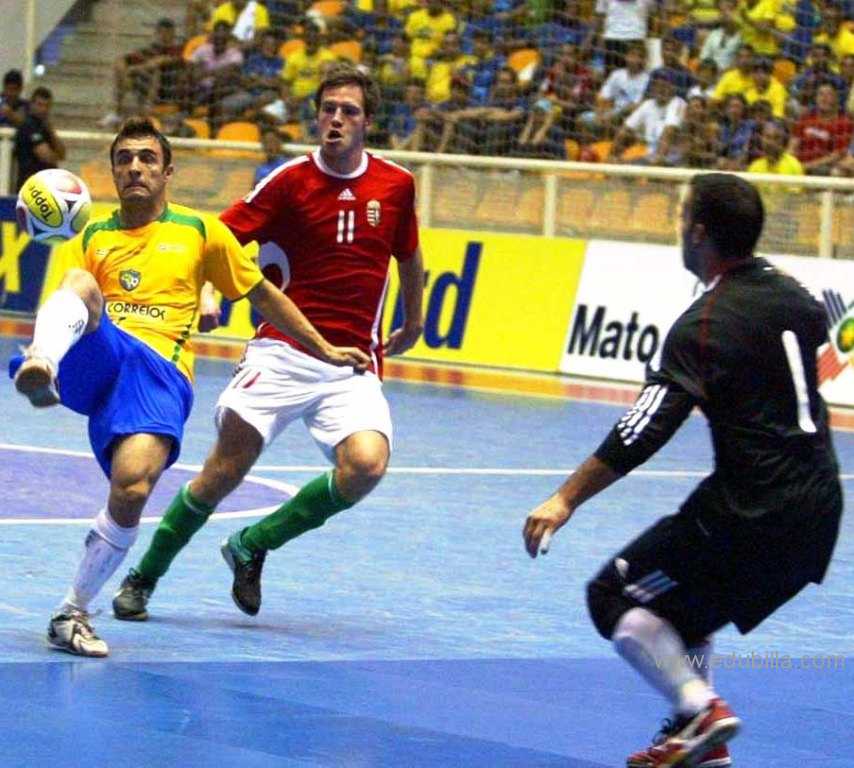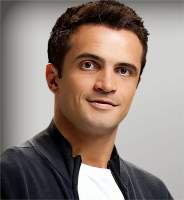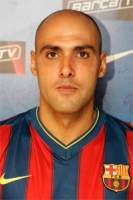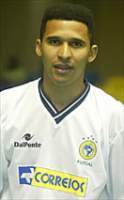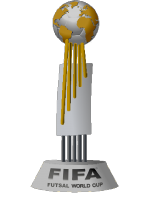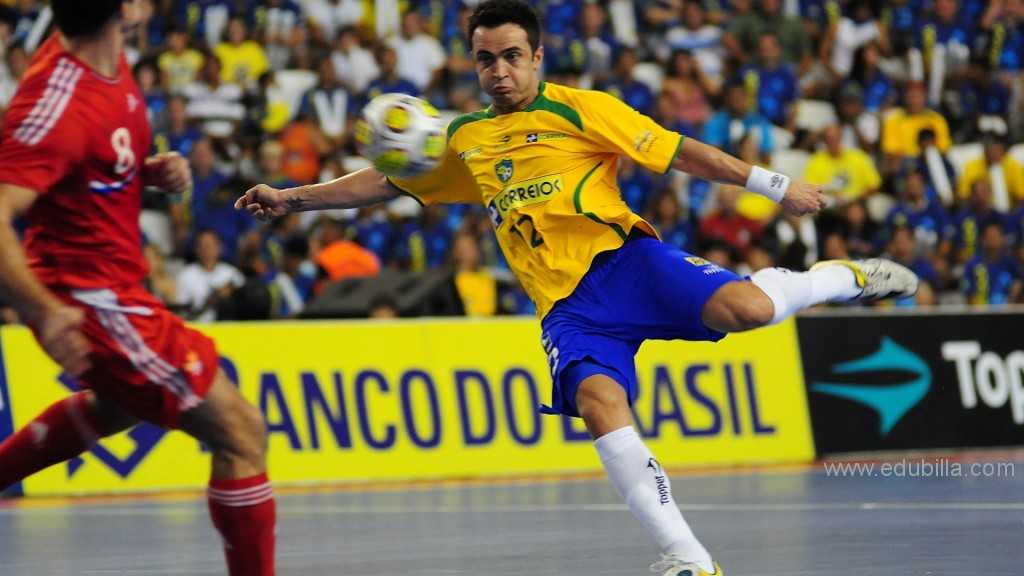
Overview Of Futsal
Futsal is a variant of football that is played on a smaller field and mainly played indoors. It can be considered a version of five-a-side football.Its name comes from the Portuguese Futebol de salão , which can be translated as "room football". It was developed in Brazil in the 1930s and 1940s.
In Brazil futsal is played by more people than football but does not attract as many spectators as the outdoor sport. Several futsal players have moved on to careers as successful professional football players.
Futsal is a game played between two teams of five players each, one of whom is the goalkeeper. Unlimited substitutions are permitted. Unlike some other forms of indoor football, the game is played on a hard court surface delimited by lines; walls or boards are not used. Futsal is also played with a smaller ball with less bounce than a regular football due to the surface of the field.The surface, ball and rules create an emphasis on improvisation, creativity and technique as well as ball control and passing in small spaces.
Game Rules
FIFA publishes its futsal rules as the 'Laws of the Game', in which each of the 17 'laws' is a thematically related collection of individual regulations. The laws define all aspects of the game, including what may be changed to suit local competitions and leagues.
Summary of rules:
Length of the field-minimum 28x15m, maximum 40x20m.
Free kick-6m from the center of the goal for penalties caused by fouls inside the 6m goal keeper's area, or 10m for cumulative fouls.
Ball-Size 4, circumference 62–64 cm, weight between 400-440g at the start of the game.
Dropped from an height of 2m, the first rebound must not be lower than 50 cm or more than 65 cm.
Time-There are two periods of 20 actual minutes or of 30 non actual minutes each. Between the two periods there is a break of 15 minutes.
Number of players-There are five players for each team in the field, one of them as goalkeeper, and a maximum number of 12 players that can be used each match. Changes are flying and unlimited.
Play resumption-Every time the ball goes out of the field, a foul or a goal is perpetrated and the referee whistles to stop the game and to resume it. Every throw-in must be done in 5 seconds that are counted by the referee with his hand up.
Personal fouls-The referee will give a light-blue card to the player that commits 5 fouls in one match. Afterwards he is sent off but can be replaced by a team mate – as it happens for the expulsion for double yellow card, for a direct red card for complaint or for a last man foul. A player that gains a red card for violent conduct, instead, can’t be changed. All the kicks gained from the fouls are direct: so, at every free kick, the referee must always count 3 meters from the ball and the wall and whistle to resume the game.
Cumulative fouls-A team can make five cumulative fouls every period of the match, from the sixth foul on the opponent team gains a free kick. The reporter tells the referee when a team reaches five fouls by pulling out a red flag in the side of the table where the bench of the team that committed five fouls is.
Goalkeeper-In the penalty area the goalkeeper can touch the ball with his hands, while off he can freely play the ball like every other player, with the limit of exclusive play in his team's half field. If he overcomes the midfield and take part of the play, he is sanctioned with both a personal and a cumulative foul. When he’s in possession of the ball, he has 5 seconds to make a goal kick or, after saving an opponent’s shot, to get rid of the ball; if he commits an offence, the referee will stop the play and give a throw-in to the opponent team.
Goalkeeper return-The goalkeeper is not allowed to overcome the midfield when he tosses off the ball with his hands, unless the ball touches the ground before or a player receives it in the team's half field. Otherwise, the goalkeeper is sanctioned with a throw-in in the closest point to the midfield given to the opponent team, but neither with a cumulative or a personal foul.
Kick-in-There is no throw-in when the ball is out of play. The only available procedure is kick-in. The player must place the ball on the touchline or outside but not more than 25 cm from the place the ball when out of play. The ball must be in stationary position before a kick-in is taken within 4 seconds from the time being ready. During kick-in the opponent player must stand not less than 5 m from the ball; if a time offence or a wrong play resumption is committed, the referee will whistle a resumption change, but no sanction in terms of personal or cumulative fouls. It is not allowed to score directly from a kick-in: the goal is valid only if any player, goalkeeper excluded, touches the ball before it enters in goal.
Corner-The ball must be placed inside the arch nearest to the point where the ball crossed the goal line and the opponent must stand on field at least 5 m from the corner arch until the ball is in play. The corner kick must be taken within 4 seconds of being ready if not a goal kick will be awarded. The ball is in play when it is kicked and moves.
Play in the team's own half field-Once the goalkeeper gives away the ball, his team has 15 seconds to overcame the midfield. Otherwise, a throw-in from the closest point to where the foul happened is given to the defending team.
Detailed Futsal Rules Can Be Downloaded From Documents
Equipments Need For Futsal
The Ball:
Size: #4
Circumference: 62-64 cm
Weight: 390-430 grams
Bounce: 55-65 cm on first bounce
Material: Leather or other suitable material (i.e., not dangerous)
shorts – If thermal under shorts are worn, they are of the same main color as the shorts
Footwear - the only types of footwear permitted are canvas or soft-leather training or gymnastic shoes with soles of rubber or a similar material. The use of footwear is compulsory
Shin-guards:
-are covered entirely by the socks
-are made of a suitable material (rubber, plastic or similar substances)
-provide a reasonable degree of protection
Goalkeepers:
-the goalkeeper is permitted to wear long trousers
-each goalkeeper wears colors which easily distinguish him from the other players and the referees
History Of Futsal
Futsal started in 1930 when Juan Carlos Ceriani Gravier (French Wikipedia), a teacher in Montevideo, Uruguay, created a version of indoor football for recreation in YMCAs. This new sport was originally developed for playing on basketball courts,and a rule book was published in September 1933.His goal was to create a team game that could be played indoor or outdoor but that was similar to football, which became quite popular there after Uruguay won the 1930 World Cup and gold medals in the 1924 and 1928 Summer Olympics.
Naming:
Futsal comes from Spanish fútbol sala or fútbol de salón , which can be translated as "hall football". During the sport's second world championships held in Madrid in 1985, the Spanish name fútbol sala was used. Since then, all other names have been officially and internationally changed to futsal. The naming was due to a dispute between FIFUSA (the predecessor to the AMF) and FIFA over the name of fútbol, FIFUSA has registered the word fut-sal in 1985 (Madrid, Spain). Since then FIFA has also started using the term futsal. The name has been translated into Portuguese as futebol de salão fútbol sala, Italian football Sala, and into French as football de salle.
First Futsal World Championship:
The first Futsal World Championship conducted under the auspices of FIFUSA (before its members integrated into FIFA in 1989) was held in Sao Paulo, Brazil, in 1982, with Brazil finishing in first place. The Brazilians repeated as champions at the second World Championship in 1985 in Spain, but lost in the third World Championship in 1988 in Australia to Paraguay. FIFA took over direct sponsorship of the event in 1989 in Holland and 1992 in Hong Kong. Brazil won both times. The U.S. Futsal (Indoor Team), finished third in 1989 and second in 1992 at the FIFA Five-a-Side World Championship. The highest showing by any team from the United States in a FIFA tournament until the U.S. Womens team won the gold medal in China for outdoor soccer. The Third FIFA World Championship was held November 24 through December 11, 1996, in Spain and for the first time FIFA names it the FIFA Futsal World Championship. The Fourth FIFA Futsal World Championship was held in Guatemala between November 18 to December 4th, 2000. The fifth Futsal World Championship was held in Taipei in December 2004.
First International Futsal:
The first international Futsal match played by the U.S. Futsal National Team was in May 1984 in Nanaimo, Canada, and the United States won 6-5. The first international Futsal match in the United States was held in December, 1985, at Sonoma State University in Rohnert Park, California. The U.S. select team, defeated Australia, 9-5.
U.S. Futsal has conducted a National Championship each year since 1985. Futsal is establishing itself at the youth level in the U.S. The Boys and Girls Clubs of America took a strong interest after the Columbia Park Club in San Francisco asked U.S. Futsal to give a demonstration. The national organization adopted the sport, and it is now played at about 1,100 Boys and Girls Clubs throughout the U.S. The American Youth Soccer Organization (AYSO) also plays the sport in a close working relationship with U.S. Futsal since 1988.
South American Futsal Confederation:
In 1965 the Confederación Sudamericana de Fútbol de Salón (South American Futsal Confederation) was formed, consisting of Uruguay, Paraguay, Peru, Argentina and Brazil.
Shortly after, a unique tournament was organized. It attracted some interest in South American media, which regularly began to follow futsal. In particular, it was the journalist José Antônio Inglêz who passionately contributed to the rapid spread of the game, as well as being credited as the man who coined the name “futsal” to define the sport.
Origin Of Futsal
The origin of Futsal (Five-a-Side Soccer) can be traced back to Montevideo, Uruguay, in 1930 when Juan Carlos Ceriani devised a five-a-side version of soccer for youth competion in YMCAs. The game is played on basketball-sized courts, both indoors and out without the use of sidewalls.
First international Term:
The term FUTSAL is the international term used for the game. It is derived from the Spanish or Portuguese word for "soccer"-- FUTbol or FUTebol, and the French or Spanish word for "indoor" -- SALon or SALa. The term was adopted by U.S. Futsal since it includes the initials "fUtSAl" (USA). The term was trademarked in the United States after U.S. Futsal changed its corporate name within the state of California.
First International Competition:
The first international competition took place in 1965, when Paraguay won the first South American Cup. Six more South American Cups were held through 1979, with Brazil winning all of them. Brazil continued its dominance with a victory in the first Pan American Cup in 1980 and won it again the next time it was played in 1984. A U.S. team took part in the 1984 cup, but finished out of the running.
First Rule Book:
Ceriani, writing the rule book, took as example the principles of football (the possibility to touch the ball with every part of the body except for the hands), but he took rules from other sports too: from basketball the number of team players (five) and the game duration (40 actual minutes); from water polo the rules about the goal keeper; from handball for the field and net’s sizes. The result is a lively, evolved, dynamic, active and supportive sport.
Initially, the rules were not uniform. In 1956, the rules were modified by Habib Maphuz and Luiz Gonzaga de Oliveira Fernandes within the YMCA of São Paulo Brazil to allow seniors to compete. Luiz de Oliveira wrote the "Book of Rules of Fuitsal" in 1956, then adopted also at the international level.
Governing Bodies
There are currently two governing bodies: Asociación Mundial de Fútbol de Salón (AMF) and Fédération Internationale de Football Association (FIFA). AMF and FIFA are responsible for maintaining and regulating the official rules of their respective versions of futsal.
FIFA publishes its futsal rules as the 'Laws of the Game', in which each of the 17 'laws' is a thematically related collection of individual regulations. The laws define all aspects of the game, including what may be changed to suit local competitions and leagues.
World Futsal Association(AMF):
The Asociación Mundial de Futsal (AMF) (English: "World Futsal Association) is the governing body of futsal. It was original founded on July 25, 1971 as the Federación Internacional de Fútbol de Salón (FIFUSA) (English: International Futsal Federation) in Rio de Janeiro, Brazil. On December 1, 2002 the organisation changed its name to Asociación Mundial de Futsal
To Visit AMF Click Here
History of AMF:
Futsal started in Montevideo, Uruguay in 1930 when Juan Carlos Ceriani created a version of indoor football for recreation in YMCAs. In 1965 the Confederacion Sudamericana de Futbol de Salon (South American Futsal Confederation) was formed, consisting of Uruguay, Paraguay, Peru, Argentina and Brazil.
The sport began to spread across South America, and its popularity ensured that a governing body was formed under the name of FIFUSA (Federación Internacional de Fútbol de Salón) in 1971, comprising Argentina, Bolivia, Brazil, Paraguay, Peru, Portugal and Uruguay, along with the World Championships. The first FIFUSA World Championships were held in São Paulo, with hosts Brazil crowned champions ahead of Paraguay and Uruguay. Even more countries participated in the second World Championships held in Madrid in 1985.
Due to a dispute between FIFA and FIFUSA over the name of fútbol, FIFUSA has registered the word fut-sal in 1985 (Madrid, Spain). In the 90s, FIFA wanted to promote and spread its own version of indoor football, different from the original one played in the South American Countries but didn't manage to find an agreement with FIFUSA in the Rio de Janeiro Congress in 1989. In 2000, there was an attempt to repair the situation in Guatemala, while FIFA was celebrating in this Country its fifth World Championship.
In 2002 FIFUSA was reorganised into AMF.
At the present time, AMF counts 40 national federations and 5 continental federations.
International Federation of Association Football(FIFA):
The Fédération Internationale de Football Association (FIFA /?fi?f?/; English: International Federation of Association Football) is the international governing body of association football, futsal and beach soccer. FIFA is responsible for the organisation of football's major international tournaments, notably the World Cup which commenced in 1930 and the Women's World Cup which commenced in 1991.
FIFA was founded in 1904 to oversee international competition among the national associations of Belgium, Denmark, France, Germany, the Netherlands, Spain, Sweden and Switzerland. Headquartered in Zürich, membership now comprises 209 national associations. Member countries must each also be members of one of the six regional confederations into which the world is divided: Africa, Asia, Europe, North & Central America and the Caribbean, Oceania and South America.
Although FIFA does not control the rules of the game, it is responsible for both the organisation of a number of tournaments and their promotion, which generate revenue from sponsorship. In 2013, FIFA had revenues of over 1.3 billion U.S. dollars, for a net profit of 72 million, and had cash reserves over 1.4 billion U.S. dollars.
Reports by investigative journalists have linked the FIFA leadership with rapaciousness, corruption, and bribery, and alleged that vote rigging was involved in the election of president Sepp Blatter. FIFA's choice to award the 2018 and 2022 World Cups to Russia and Qatar, respectively, have been widely criticised, with allegations of vote buying.
Recognitions and awards:
FIFA awards, each year, the title of FIFA Ballon d'Or to the top men's and women's players of the year, as part of its annual awards ceremony which also recognises team and international association football achievements. Until 2009, they awarded the FIFA Player of the Year to the best player, until it and the Ballon d'Or ceased to be awarded. At the Ballon d'Or banquet, the FIFA Puskás Award, the FIFA/FIFPro Best XI, FIFA Fair Play Award, and the FIFA Presidential Award are also awarded.
In 1994 FIFA published the FIFA World Cup All-Time Team. In 2000 FIFA published the results of an Internet poll, declaring Real Madrid to be the FIFA Club of the Century. In 2002 FIFA announced the FIFA Dream Team, an all-time all-star team chosen by fans in a poll.
As part of its centennial celebrations in 2004, FIFA organised a "Match of the Century" between France and Brazil.
To Visit FIFA Click Here
Awards Related To Futsal
At the end of each year, several awards are attributed to the players and teams which have distinguished from the rest, in different aspects of futsal by the UMBRO. There are currently ten awards:
1 Best Player of the World
2 Best Goalkeeper of the World
3 Best National Team Coach of the World (Dimitri Nicolaou Award)
4 Best National Team of the World
5 Best Club Coach of the World
6 Best Club of the World
7 Best Young Player of the World
8 Best Referee of the World
9 Best Woman Player of the World
AGLA Futsal Awards:
The AGLA Futsal Awards is the annual awards of world soccer.
The award took the name " Umbro "until 2012, when the prize went to be sponsored by AGLA . 1 However, the award is the seal of FIFA.
The awards are divided into 10 categories:
1 World Player
2 Best Player of World
3 Best Goalkeeper / World Archer
4 World's Best Young Player
5 Boot European Golden
6 World's Best National Team Coach ("Dimitri Nicolaou Award")
7 World's Best Club Coach
8 World's Best Referee
9 World's Best National Team
10 Best Time / World Club
FIFA Awards:
Final Tournament Standings
Adidas Golden Ball
FIFA Fair Play award
Adidas Golden Boot
Adidas Golden Glove
Sample Documents Of Futsal
-Lance Armstrong

